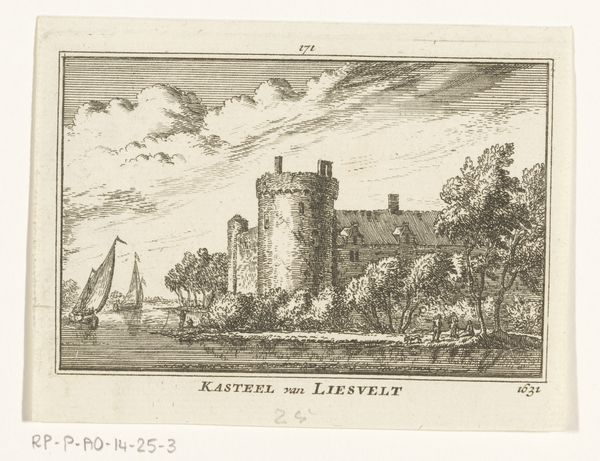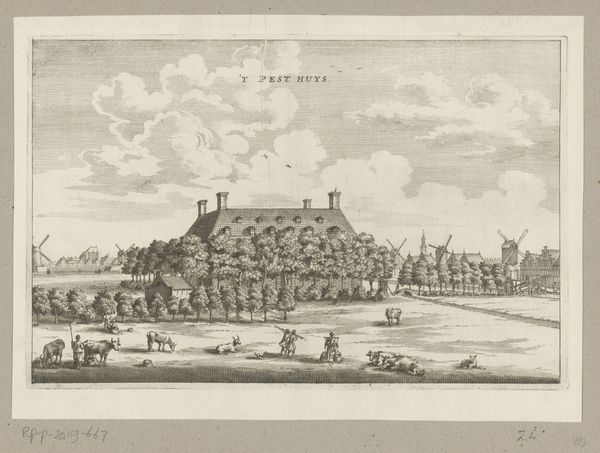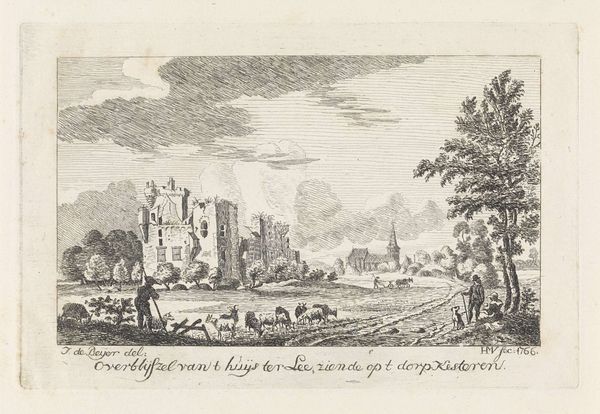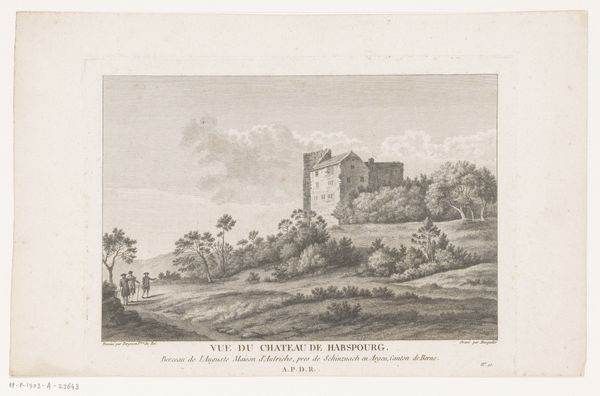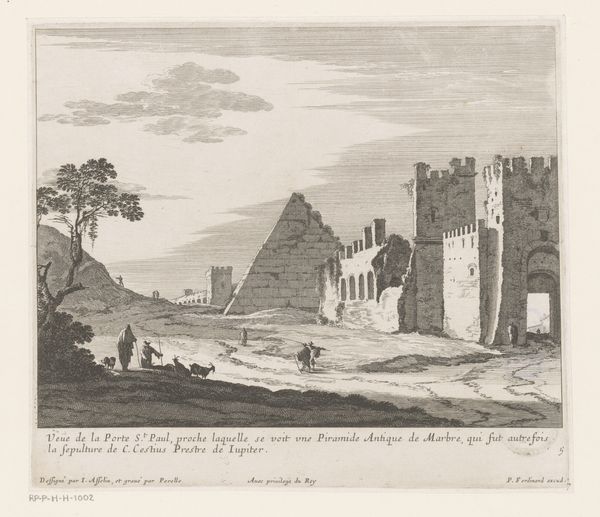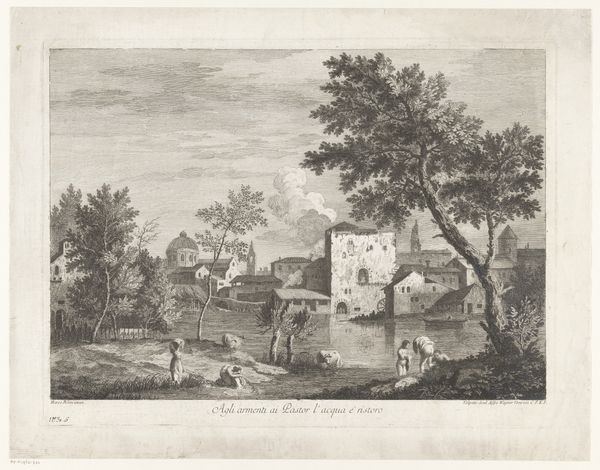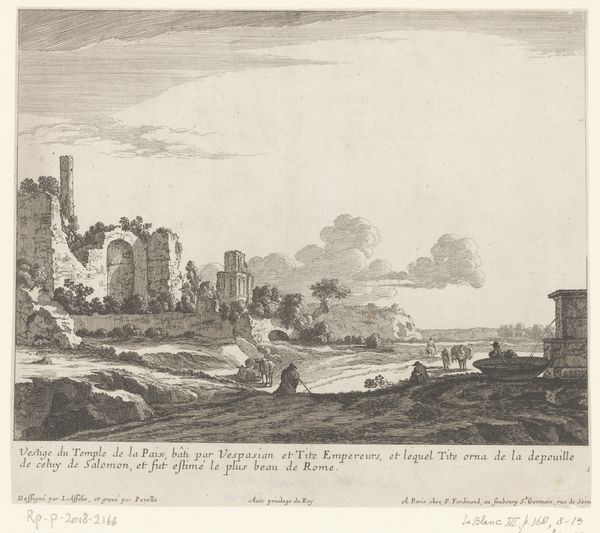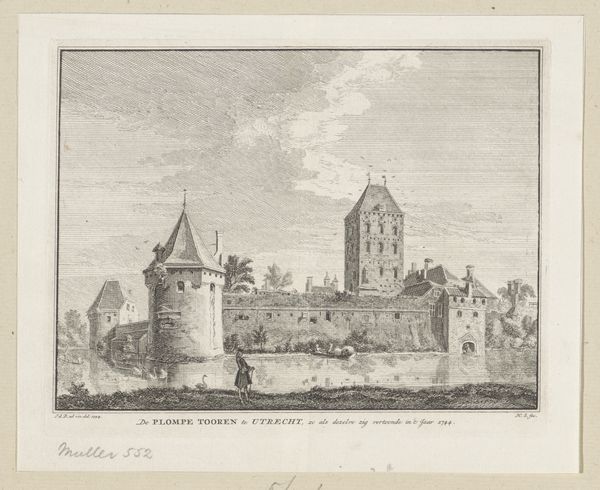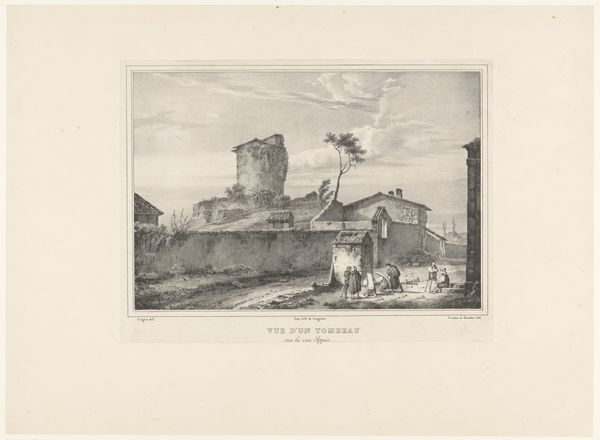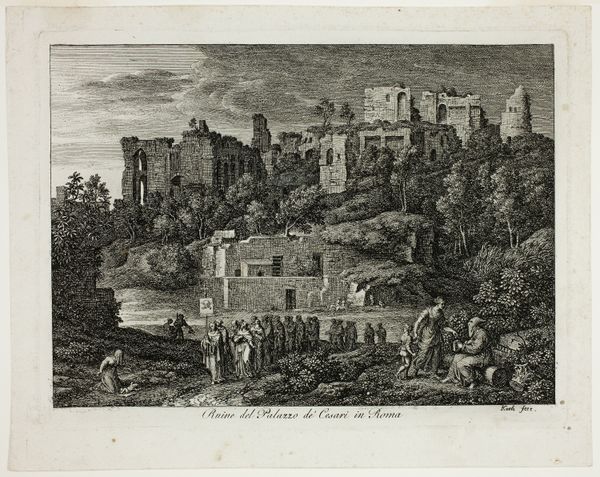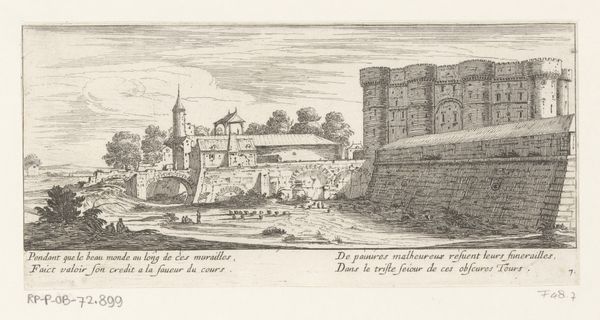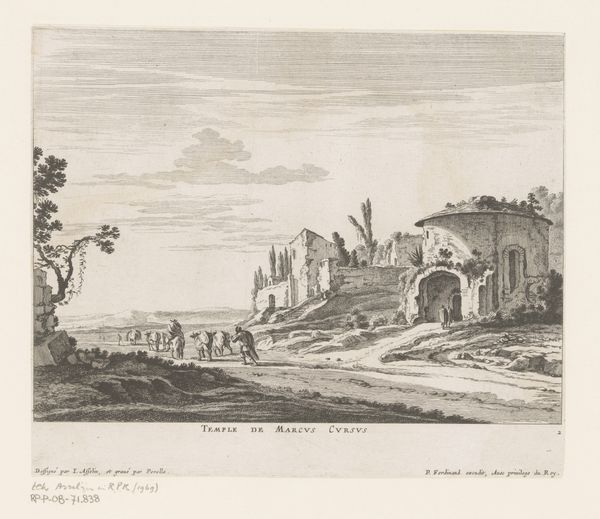
print, engraving
#
dutch-golden-age
# print
#
old engraving style
#
landscape
#
engraving
Dimensions: height 80 mm, width 115 mm
Copyright: Rijks Museum: Open Domain
Abraham Rademaker etched "View of Liesveld Castle" in 1631, presenting us with a scene dominated by a formidable castle, a symbol of power and refuge. Castles, in their essence, represent more than just stone and mortar; they embody the very idea of defense against the unknown, a safe haven in tumultuous times. This idea stretches back through history, appearing in various forms across cultures, from the fortified citadels of ancient Greece to the walled cities of medieval Europe. Consider how the castle motif has evolved. Initially, a simple earthwork, it grew into complex stone structures, each iteration reflecting changing architectural technologies and societal anxieties. The need for security, deeply rooted in the human psyche, drives this continuous adaptation. The image of a castle evokes a sense of longing for safety, an echo of ancestral memories of protection and stability. Rademaker's etching captures not just a building, but a universal aspiration for security that continues to resonate.
Comments
No comments
Be the first to comment and join the conversation on the ultimate creative platform.
